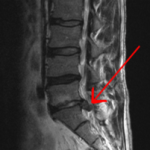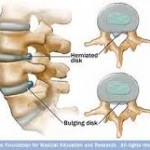Understanding The Anatomy Of The Spine
The spine extends from the base of the skull down to the bottom of the pelvis. The spine consists of multiple bones (vertebrae). Each vertebra is separated by cushion-like pads called discs. In an adult, there are 26 vertebrae in the spine.
The spine is divided into five main areas. The first is the cervical spine, which starts at the base of the skull and extends down to the top of the back. The cervical spine includes seven vertebrae.
The next section of the spine is the thoracic spine. The thoracic spine is the largest area of the back. The thoracic spine has 12 vertebrae. The thoracic spine begins at the top of the back where the cervical spine ends. There is very little movement involved with the thoracic spine. The thoracic spine is not a common area for injuries seen as part of personal injury claims.
As you move down your spine, the next section is the lumbar spine. It is generally thought of as the low back part of the spine. The lumbar spine consists of five large vertebrae. The first vertebrae start directly under the last thoracic vertebrae. The last lumbar vertebra is located at your waist. This part of your back is subject to a lot of flexibility and movement, and is a frequent area of injury.
The next level of the spine is the sacrum. The sacrum consists of five bones which are fused together. Your sacrum makes up part of your pelvis.
The final portion of the spine is the coccyx. The coccyx consists of four fused bones at the very bottom portion of the spine. Tailbone pain often involves the coccyx.
Running down the center of the spine is the spinal cord. The spinal cord is a long, thin, tubular bundle of nervous tissues and support cells that extends from the brain. The brain and spinal cord together make up the central nervous system.
Injuries to the Spine
The area in between each of the vertebrae is a disc. Discs act as shock absorbers between the vertebrae. They allow the vertebrae to move. There are two levels to the discs. The outer level is called the annulus fibroses. The annulus fibrosis is the hard outer edge of the disc. Inside the annulus fibroses is another level called the nucleus pulposus. The nucleus pulposus is the soft center of the disc. A disc often is compared to a jelly donut with a hard outer layer (the annulus fibrosis) and a soft filing (the nucleus pulposus). The nucleus pulposus is filled with a gelatinous substance with a large water content.
One frequently seen spinal injury involves a herniation of the disc. Herniation occurs when there is a complete tear in the annulus, which allows the soft center of the disc (the nucleus pulposus) to escape. This often causes an entrapment of the nerve root or an indentation of the spinal cord. Below is a diagram of a disc with a herniation pressing on the spinal cord. In the context of a jelly donut, the outside of the donut has torn, and the jelly has begun to leak out.

Another frequently seen spinal injury is a bulging disc. A bulging disc occurs when the annulus extends beyond the parameters of the vertebrae, but the nucleus is still contained within the confines of the disc. Set forth below is a diagram showing a disc with a bulge. Also in the diagram is a herniated discs. With a bulging disc, the jelly has not yet come out of the donut; instead, the disc itself has changed shape. With the herniated disc, the jelly has come out of the donut.

Both herniated and bulging discs can cause significant problems especially when they impinge on the nerve root. When this happens, there are frequently neurological problems. For example, you may have numbness in your hands and feet.
Other injuries that may be seen that involve the spine include spinal nerve injuries; spinal stenosis where there is a narrowing of the spinal canal, which can cause entrapment of the nerve; spinal subluxation, which occurs when a vertebrae moves out of position or is dislocated, which then creates pressure or irritates the spinal nerves; and spondylolisthesis, which is a slippage of a disc.
Finally, often seen in automobile accidents, there are soft tissue / whiplash type injuries.
Your spinal cord is the central support for the body’s muscular system and works by allowing the brain to communicate with the rest of your body. What this means is that you have a traumatic spinal cord injury, you could be looking at pain in your arms, legs or other parts of your body. You could also be looking at permanent loss of function to some parts of your body as well.
Spinal cord injuries occur from a number of different accidents, including, but not limited to, the following:
- Instances of medical malpractice or surgery malpractice
- Car and truck accidents or any other vehicle accident where there is a heavy impact to your spine
- Slip and fall accidents
- Workplace injuries
- Catastrophic accidents
